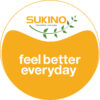In the journey towards recovery after a stroke, the importance of effective rehabilitation techniques cannot be overstated. These techniques are the cornerstone of rebuilding lives, restoring independence, and enhancing the quality of life for stroke survivors. At Sukino Healthcare, we have mastered a comprehensive approach to stroke patient rehabilitation, utilizing evidence-based methods tailored to individual needs. In this article, we delve deep into the array of effective rehabilitation techniques for stroke patients to expedite their journey to recovery.
Rehabilitation Techniques for Stroke Patients
Rehabilitation techniques that can help stroke patients recover faster are:
1. Physical Therapy for Stroke Recovery
Our effective rehabilitation techniques for stroke patients program commences with the pivotal element of physical therapy. This technique focuses on rebuilding muscle strength, expanding the range of motion, and re-establishing overall mobility. The aftermath of a stroke often leaves patients with muscle weakness, stiffness, and movement difficulties that impede their capacity to perform everyday activities. Our seasoned therapists engineer personalized exercise regimes that pinpoint specific deficits resulting from the stroke. Stroke recovery exercises and techniques are integrated into these regimes to encourage gradual control recovery over movements. This empowerment enhances daily activity proficiency and cultivates renewed self-assurance in physical capabilities.
2. Occupational Therapy
The path to effective rehabilitation for stroke survivors involves not just physical recovery, but also the restoration of functional independence. Sukino Healthcare’s methodology, best practices in stroke patient rehabilitation, is exemplified through our comprehensive occupational therapy programs. These programs facilitate the relearning of crucial skills like dressing, grooming, and self-feeding. A stroke can impair fine motor skills and coordination, rendering even elementary tasks formidable. By leveraging advanced rehab methods for stroke survivors, our therapists employ adaptive techniques and tools to empower patients to surmount these hurdles. This reinstates their autonomy and ability to perform actions integral to their well-being.
3. Speech and Language Therapy
A focal challenge post-stroke lies in overcoming communication barriers, often necessitating specialized techniques like speech and language therapy. Our post-stroke rehabilitation strategies encompass tailored approaches to aid patients in regaining their capacity to communicate effectively. Neuromuscular exercises, articulation drills, and language comprehension tasks constitute the therapeutic exercises for stroke patients in this domain. By facilitating this progress, we not only rekindle patients’ confidence but also foster meaningful interaction, thereby mitigating the isolation that communication impediments can induce.

4. Cognitive Rehabilitation
Cognitive impairment is another facet that necessitates attention in stroke patient rehabilitation. Underlying the rubric of effective rehabilitation techniques, cognitive restoration is pivotal to a patient’s overall well-being. Neurological rehab for stroke survivors is achieved through tailored cognitive rehabilitation programs. These programs are meticulously designed to heighten cognitive abilities like memory, attention, and problem-solving. By incorporating stroke recovery training and exercises, such as memory-enhancing drills and cognitive training, we facilitate seamless reintegration into daily life. This not only enhances cognitive function but also propels the recovery journey toward a higher quality of life.
5. Constraint-Induced Movement Therapy
Among the advanced rehab methods for stroke survivors, Constraint-Induced Movement Therapy (CIMT) holds a special place. This technique fosters the utilization of the affected limb by restraining the unaffected limb, propelling neuroplasticity. At Sukino Healthcare, our approach to stroke recovery exercises and techniques is exemplified through the application of CIMT. By stimulating motor skill recovery and augmenting functional use of the affected limb, we demonstrate the remarkable plasticity of the brain to adapt and heal post-stroke.
6. Virtual Reality (VR) Rehabilitation
The modern era allows us to incorporate innovative technologies into our stroke rehabilitation programs, such as rehabilitating after a stroke with Virtual Reality (VR). This engaging and effective tool challenges patients through simulations mimicking real-life scenarios. These scenarios, integrated into our effective rehabilitation techniques for stroke patients, encourage motor skill improvement and offer a motivational milieu for progress. VR technology, a quintessential aspect of the stroke rehabilitation program at home, urges patients to transcend limitations and strive for betterment in a captivating manner.
7. Hydrotherapy
Underpinning our effective rehabilitation techniques for stroke patients, hydrotherapy, or aquatic therapy, utilizes water’s properties to provide gentle resistance and support during exercises. Hydrotherapy becomes a compelling tool in our arsenal, offering buoyant support ideal for stroke patients contending with muscle weakness or balance instability. By fostering relaxation, enhancing circulation, and amplifying joint mobility, hydrotherapy features as a cornerstone within our stroke recovery training and exercise framework.
8. Music and Art Therapy
Incorporating holistic healing, our stroke rehabilitation strategies embrace music and art therapy. These therapies activate distinct areas of the brain, nurturing emotional expression, cognitive progression, and stress alleviation. As part of our therapeutic exercises for stroke patients, these creative outlets empower patients. Music therapy boosts mood and cognitive function, while art therapy serves as an avenue for self-expression beyond words. These therapies amplify the emotional and creative facets of rehabilitation, bolstering patients in cognitive and emotional realms.
9. Family-Centered Approach
Our commitment to effective rehabilitation techniques for stroke patients extends beyond the patient to their support network. Families play a vital role in the recovery process. Our advanced rehab methods for stroke survivors underscore the importance of including families. Caregivers are armed with insights into the patient’s progress, techniques, and exercises, creating a robust support network that persists beyond the facility. This collaboration ensures a continuum of care, pivotal for a successful rehabilitation journey.
Conclusion
Multifaceted and effective rehabilitation techniques for stroke patients are required to address the myriad challenges that each patient encounters. Sukino Healthcare’s commitment to tailored, evidence-based rehabilitation techniques cultivates extraordinary recoveries. Through the seamless amalgamation of cognitive, emotional, and physical approaches, we empower stroke patients to regain independence, rebuild their lives, and embrace a brighter tomorrow. Our expansive array of rehabilitation techniques serves as a testament to our dedication, to nurturing stroke survivors through their path of recovery and renewed quality of life.
We are India’s first comprehensive continuum care provider. We provide multidisciplinary out of hospital care to acute and post-acute and chronically ill patients at our critical care facilities and your home.


